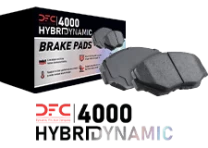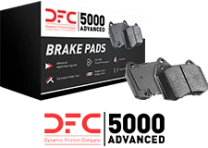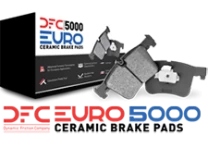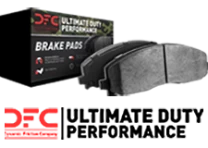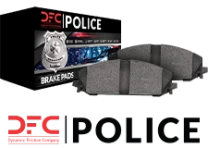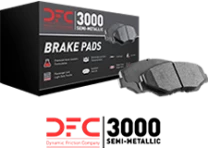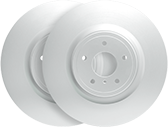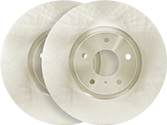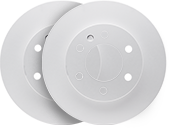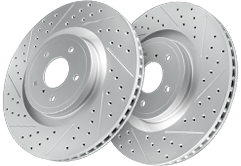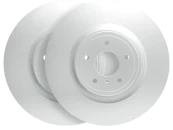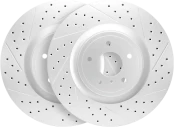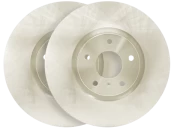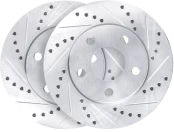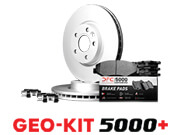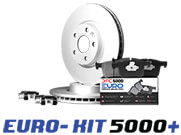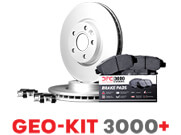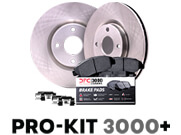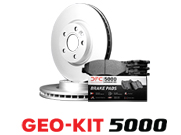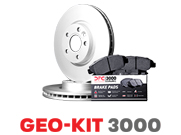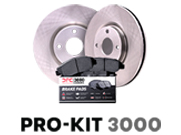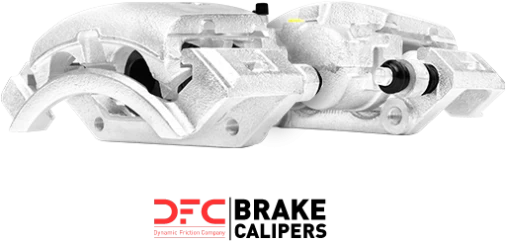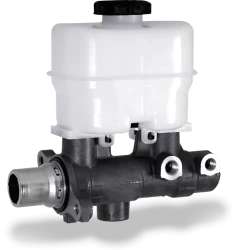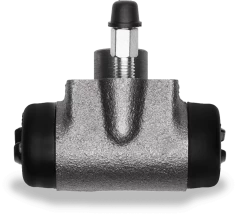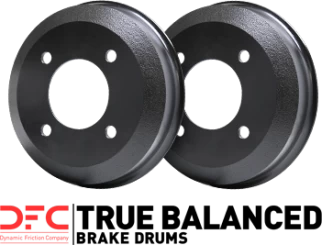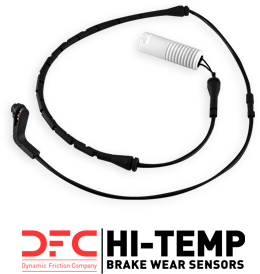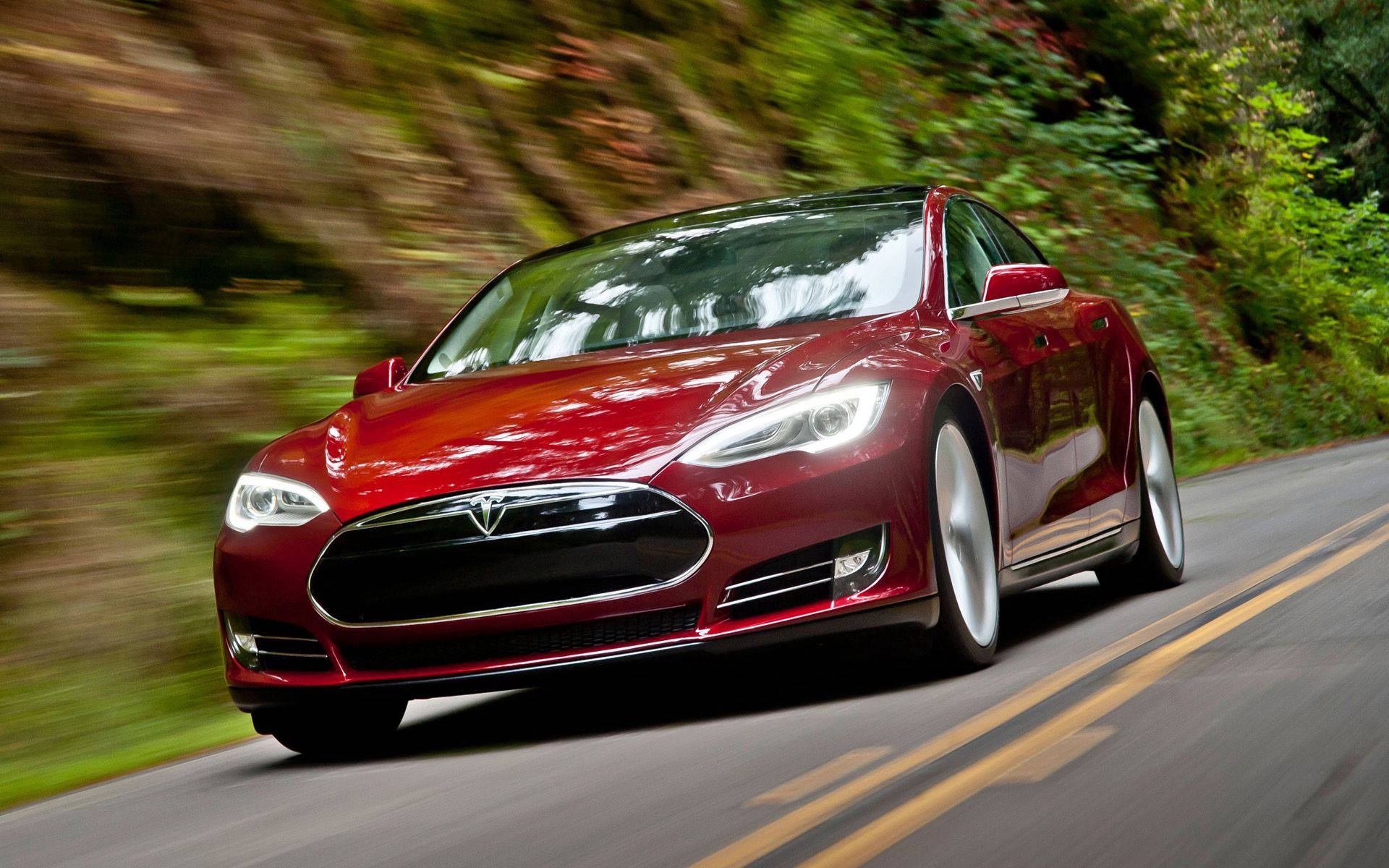Obeying speed limits not only keeps you safer but also highlights why obeying speed limits can prolong your brake system’s lifespan. Driving within speed limits reduces stress and heat on your brakes, which helps components last longer. This article will explain these benefits and share tips on smarter driving to save you money on brake repairs.
Key Takeaways
- Obeying speed limits reduces brake wear and prolongs the lifespan of your braking system, enhancing safety.
- Smooth driving habits like gradual braking and maintaining a safe following distance can significantly decrease the need for hard braking, preserving brake health.
- Regular maintenance, including brake inspections and timely pad replacements, is essential for optimizing brake performance and saving on repair costs.
Car Accident Statistics Due To Faulty Brakes
Faulty brakes are a common cause of car accidents. When brakes do not work properly, they can lead to dangerous situations on the road. Statistics show that many accidents happen because of brake problems. In the United States, there are approximately 6 million car accidents each year, and it is estimated that around 5% of these, or about 300,000 accidents, are suspected to be caused by faulty brakes while disobeying speed limits. This alarming number underscores the critical importance of regular brake maintenance and inspections.
According to Donald Day, a car accident lawyer from Naples, Florida, as per their evaluation towards car accident legal issues, it is often that violating speed limits is root of brake-related car accidents. He explains that driving at excessive speeds makes the car’s brakes more susceptible to wear and tear, especially when the type of driving style is not at par with the brakes they have in their car; increasing the likelihood of brake failure and subsequent accidents. This insight highlights the importance of adhering to speed laws to maintain brake health and ensure road safety.
How Speed Impacts Brake Wear
Driving at higher speeds demands longer stopping distances, which inevitably increases brake wear. The faster you go, the more force and energy your brakes need to dissipate to bring your vehicle to a halt. This section will delve into the specifics of how speed impacts brake wear, focusing on two main factors: increased friction and heat generation, and frequent hard braking.
Understanding these factors allows you to make informed decisions about your driving habits and take proactive steps to minimize brake wear. Let’s explore these aspects in more detail.
Increased Friction and Heat Generation
High speeds lead to more friction and heat, which accelerates brake pad breakdown. When you drive fast and apply the brakes, the friction between the brake pads and rotors generates a significant amount of heat. This rapid heating and cooling cycle can cause the brake pads to degrade faster than they would under normal driving conditions.
Increased friction and heat not only wear down brake pads but also affect other brake components. Over time, this can lead to uneven wear and tear, reducing the overall effectiveness of your braking system.
Adhering to speed limits can significantly extend the lifespan of your brakes, ensuring optimal performance when needed most.
Frequent Hard Braking
Driving at high speeds requires more frequent braking. Additionally, the braking needs to be more forceful. When you’re speeding, you’re more likely to encounter situations that require sudden, hard braking, which places additional stress on your brake system. This type of braking accelerates the wear of brake pads, leading to more frequent replacements and higher maintenance costs.
Moreover, brake pads experience uneven wear when subjected to repetitive hard braking at high speeds. Overloading your vehicle can also exacerbate this issue, as more braking force is needed to slow down or stop a heavier vehicle.
Maintaining a moderate speed and avoiding rapid acceleration reduces the need for hard braking, thereby prolonging the life of your brake components.
Potential Savings on Brake Repairs by Obeying Speed Limits
Adhering to speed limits contributes to the longevity of the brake system, which can result in significant financial savings. Speeding often leads to increased brake wear due to more frequent hard braking, resulting in higher repair and replacement costs. Maintaining appropriate speeds contributes to safer rides. It can also help you save money on brake repairs.
Moreover, by reducing the frequency of brake repairs and replacements, you also decrease the likelihood of brake-related accidents. This not only ensures a safer driving experience but also reduces the overall cost of vehicle maintenance. In the long run, obeying speed limits is a cost-effective and safety-enhancing practice for all drivers.
Driving Habits That Complement Speed Limit Adherence
Good driving habits are essential for preserving brake health and complementing the practice of obeying speed limits. Reduced speed can enhance the driver’s ability to react to road changes, further preserving brake health. Driving within speed limits decreases the wear and tear on brake components, leading to fewer replacements and repairs.
Maintaining a moderate speed improves reaction times, allowing for smoother deceleration, which lessens the strain on the braking system. Planning ahead by slowing down before reaching stops reduces the need for hard braking.
Let’s explore some specific driving habits that can help prolong your brake life.
Gradual Braking
Using smooth and gradual braking techniques reduces stress on brake components, which helps to extend their lifespan. Applying brakes gently rather than abruptly minimizes wear and tear on brake pads and rotors. Sudden hard braking puts excessive stress on the braking system, which can lead to premature wear.
Anticipating traffic conditions and highway driving while braking gradually can prevent the need to brake suddenly, further prolonging brake life. Maintaining a safe following distance allows drivers to apply brakes gradually, reducing the need for sudden stops.
Smooth driving practices, including gradual braking, contribute to extending the lifespan of brake components.
Maintaining a Safe Following Distance
Maintaining a safe following distance is crucial to avoid sudden stops and unnecessary wear on the braking system. Keeping a safe distance minimizes the need for sudden stops, allowing for smoother, more gradual braking. A good rule of thumb for maintaining a safe distance is to keep at least one car length for every 10 MPH.
In summary, maintaining a safe following distance is essential for extending brake life and enhancing overall driving safety. This practice not only helps in preserving brake health but also improves reaction times and reduces the likelihood of accidents.
Engine Braking Techniques
Engine braking is the method of slowing down by shifting down through the gears. This technique reduces reliance on brake pads, which helps extend their lifespan. Engine braking is beneficial when transporting heavy loads. It helps to preserve the brake pads and rotors.
Engine braking improves brake longevity by reducing reliance on the brake pedal during deceleration. This technique is effective in both manual and automatic transmission vehicles, making it a versatile and practical method for preserving brake health.
Routine Maintenance Practices for Prolonged Brake Life
Regular maintenance and the right driving techniques can significantly extend the lifespan of brake pads. Following brake maintenance tips leads to longer brake lifespan, improved safety, and cost savings. Essential for extending the life of brakes is having regular brake maintenance.
Maintaining safe and legal speed limits, coasting before braking, and increasing following distance can significantly reduce brake wear while driving. Gradual braking, maintaining a safe following distance, and using engine braking techniques are effective ways to prolong brake life.
Let’s delve into some routine maintenance practices that can help keep your brake system in top condition.
Regular Brake Inspections
Regular brake inspections are crucial as they catch early signs of wear and prevent costly repairs. Routine inspections identify and replace brake pads before they wear out completely, helping save money in the long run. During regular brake inspections, important components such as brake pad thickness, rotor condition, and brake fluid levels should be checked.
A brake maintenance inspection typically consists of checking brake pads and rotors, as well as flushing and replacing brake fluid if necessary. It is essential to assess the thickness of brake pads during routine brake maintenance to prevent failure. Rapid temperature fluctuations from quick braking can weaken brake materials, leading to faster degradation and failure if not inspected regularly.
Brake Fluid Flush and Replacement
Brake fluid is essential for optimal brake performance and system function. Regular flushing and replacing of brake fluid maintains optimal brake function and prolongs brake life. Brake fluid naturally attracts water, which can lead to decreased brake performance if not managed. Flushing brake fluid is advisable every two years. Alternatively, it should be done every 25,000 miles.
Maintaining brake fluid at the recommended levels is critical to prevent issues like brake fade, which can occur if inspections are neglected. Regular brake fluid flushes ensure that your brakes operate efficiently and safely.
Timely Brake Pad Replacement
Brake pads typically have a lifespan that ranges between 15,000 to 80,000 miles. Over time, brake pads will wear down due to constant friction and pressure applied during braking. Timely replacement of worn brake pads is crucial to maintaining optimal braking performance and ensuring safety.
Monitoring brake pad wear is essential to ensure that brakes function properly for safe driving. Regularly checking and replacing brake pads can prevent brake failure and extend the overall lifespan of your brake system.
The Role of Vehicle Weight in Brake Wear
Excess vehicle weight leads to increased brake wear due to the higher braking force required to stop the vehicle. Statistical analysis indicates that the amount of brake and tire wear can be predicted based on the mass of the vehicle and the severity of braking events. Heavier vehicles generate higher quantities of brake wear particles, significantly contributing to increased emissions.
The intensity of braking increases in heavier vehicles, resulting in greater particle emissions during braking. To minimize strain on brakes related to vehicle weight, drivers should remove unnecessary items from their cars. Reducing vehicle weight lowers the kinetic load on brakes, which decreases brake wear.
Overall, minimizing excess weight not only prolongs the lifespan of brake components but also enhances vehicle performance and safety. Keeping your vehicle lighter results in smoother rides and more efficient braking.
Summary
In summary, obeying speed limits plays a crucial role in prolonging the lifespan of your brake system. By driving at moderate speeds, you reduce the stress on your brake components, minimize the need for frequent hard braking, and prevent excessive heat generation. These practices, combined with good driving habits like gradual braking, maintaining a safe following distance, and using engine braking techniques, can significantly extend the life of your brakes.
Regular maintenance, including routine brake inspections, brake fluid flushes, and timely brake pad replacements, is essential for optimal brake performance and safety. Additionally, reducing vehicle weight can further decrease brake wear and improve overall vehicle efficiency. By adopting these practices, you can enjoy a safer driving experience, save money on brake repairs, and contribute to a cleaner environment.
Frequently Asked Questions
How does obeying speed limits reduce brake wear?
Obeying speed limits is a smart choice because it minimizes the energy needed to stop, which directly leads to less brake wear. By driving within the limits, you’re not just ensuring safety, but also extending the life of your vehicle!
What are the benefits of gradual braking?
Gradual braking not only extends the lifespan of your brake components but also enhances your safety by preventing sudden stops. Embrace this practice for smoother rides and greater vehicle longevity!
How often should I get my brakes inspected?
You should get your brakes inspected regularly as part of routine maintenance to catch any early signs of wear. This proactive approach will help ensure your safety and save you from costly repairs down the line.
What is engine braking and how does it help?
Engine braking not only helps slow your vehicle by downshifting but also reduces wear on your brake pads, enhancing their lifespan. Embracing this technique can lead to smoother and more efficient driving!
How does vehicle weight affect brake wear?
Reducing your vehicle’s weight will significantly decrease brake wear since lighter vehicles require less braking force. This not only extends the life of your brakes but also enhances your vehicle’s overall performance!

 UNITED STATES
UNITED STATES
